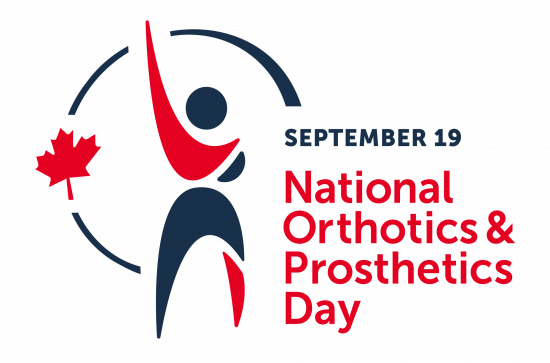
Celebrating National Orthotics & Prosthetics Day – September 19
Did you know that National Orthotics and Prosthetics Day is celebrated every year on September 19? This important day gives us a chance to pause and recognize the incredible impact of the orthotics and prosthetics (O&P) field — and the community it serves. From clinicians and technicians to the patients whose lives are transformed through ...
read more
Team Member Spotlight - Erica Stirling
At Winnipeg Prosthetics & Orthotics (WinPO), our team is made up of skilled professionals who bring more than just clinical expertise - they bring compassion, creativity, and a deep commitment to improving their clients’ lives. In this edition of our team spotlight series, we’re excited to introduce Erica, a Resident Prosthetist who d...
read more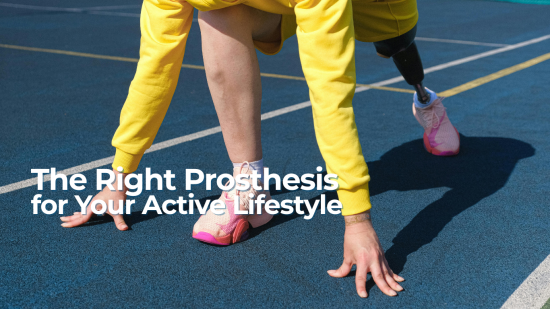
Choosing the Right Prosthesis for Your Active Lifestyle
Staying active is more than a hobby - it is a way of life. Whether you were an avid runner, casual hiker or someone who enjoyed physical activity prior to your amputation, finding the right prosthetic device can make all the difference in getting you back to doing what you love. At Winnipeg Prosthetics & Orthotics, we understand that e...
read more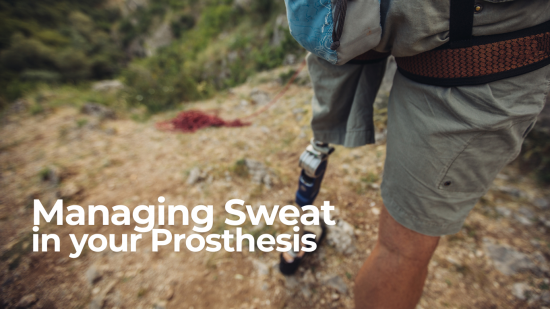
Sweat and Your Prosthesis
Increased sweating is inevitable during the warmer months - here are some tips to help you stay dry and comfortable this summer. As the warm Manitoba summer approaches, many people living with a prosthetic leg notice a common challenge: sweating inside their prosthesis. In fact, it is one of the most common concerns we hear about from ou...
read morePreparing for Life After Amputation: Tips for a Smoother Amputation Recovery Journey
If you or a loved one is facing an amputation, you are not alone - there is a supportive community here in Manitoba that can help walk with you through every step of recovery. While this journey may seem overwhelming at first, taking time to prepare for your post-surgery healing period can make a world of difference. Whether you will be a pros...
read more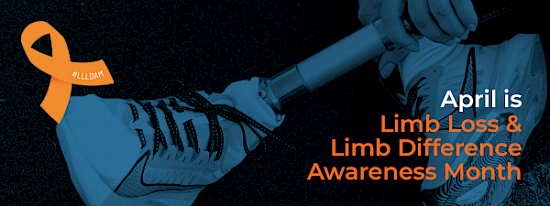
April is Limb Loss & Limb Difference Awareness Month
April is Limb Loss & Limb Difference Awareness Month April is Limb Loss & Limb Difference Awareness Month, a time for us to raise awareness, celebrate the strength and resilience of those living with limb loss or limb difference, and show solidarity with these individuals who face unique challenges every day. Whether someone is living ...
read more
Team Member Spotlight - Jodie Lewis
At Winnipeg Prosthetics and Orthotics, we are fortunate to have Jodie, an experienced and compassionate Orthotist who joined our team in 2024. With a family legacy in orthotics, Jodie is a second-generation professional, having followed in her father’s footsteps. Growing up in the Bahamas, she had the unique opportunity...
read moreThe Importance of Customization in Lower Limb Orthotics
Custom Orthotics play a crucial role in enhancing mobility and alleviating pain for individuals with various foot and lower limb conditions. While pre-made orthotics can offer some benefits, the importance of customization cannot be overstated. Tailoring orthotic devices to meet individual needs leads to improved comfort, functionality, and overall...
read moreCaring for Your Prosthetics: Maintenance Tips and Best Practices
Prosthetics can significantly improve quality of life, enhancing mobility and independence for those who use them. However, like any other piece of equipment, they require regular care and maintenance to ensure optimal performance and longevity. Here are some essential tips and best practices to help you care for your prosthetics effectively.Daily ...
read moreAdvancements in Assistive Technology: Prosthetics and Orthotics Trends
In recent years, the field of assistive technology has seen remarkable advancements, especially in the realm of prosthetics and orthotics. These innovations have transformed the lives of individuals with limb differences and mobility impairments, offering them increased independence, functionality, and quality of life. Let's delve into some of the ...
read moreFoot Orthotics for Morton’s Neuroma
Most of us have heard of the benefits that custom foot orthotics can have to treat foot abnormalities, such as pronation, plantar fasciitis or ulcers, but have you ever heard of a Morton’s Neuroma? Morton’s neuroma is a benign neuroma of an intermetatarsal plantar nerve. It is one of the less common foot ailments. Nonetheless, it can res...
read moreNavigating Emotional Well-Being After Limb Loss
Losing a limb is a life-altering event that can have a profound impact on an individual's emotional well-being. Whether the loss is due to trauma, illness, or congenital conditions, the emotional journey following limb loss can be challenging. From coping with grief and anger to adjusting to a new way of life. Navigating emotional well-being after ...
read moreDebunking Common Myths About Prosthetics
The world of prosthetics has made incredible advances over the years, providing individuals with limb loss a new lease on life. However, with these advancements have come misconceptions and myths that can skew public understanding and affect the experiences of prosthetic users. Let's take a closer look at some of these myths and shed light on the r...
read moreTeam Member Spotlight - Geena Frew
What is your position at Winpo? What was your journey to get there? Prosthetic Resident. I completed a masters degree in Rehabilitation sciences from McMaster University. In the same year I also applied to the O&P George Brown College program and was accepted. I completed one year of the technical program, then got accepted into the clinic...
read moreFactors to Consider When Choosing the Right Prosthetic
Deciding on the right prosthetic components and design can have a profound impact on the quality of life for individuals with limb loss. With advancements in technology and design, there is a wide range of options tailored to meet specific needs. However, choosing what’s right for each individual requires careful consideration of several factors ...
read moreThe Evolution of Prosthetics
Over the years, prosthetic technology has undergone a remarkable evolution, transforming the lives of millions of people worldwide. This blog post explores the journey of prosthetics and how it has impacted the millions of individuals who live with limb loss.The Dawn of Prosthetics The history of prosthetics can be traced back to ancient civiliza...
read moreDefining The Certified Orthotist
For many, including physicians and allied health professionals, orthotics and prosthetics have been somewhat of a mystery with respect to who provides them and what qualifications one must possess to do so. In any community, orthotics and prosthetics are an important medical resource; thus, knowledge of the field and its qualified providers is in...
read more
Sleep Tips for Amputees: How to Sleep Better with Limb Loss
Sleep is essential for our physical, emotional, and mental well-being. But for individuals with limb loss, getting a good night's sleep can be particularly challenging due to issues like phantom limb pain, residual limb discomfort, and changes in mobility. In this article, we will explore practical sleep tips for amputees, including stra...
read moreMassage Therapy vs. Physical Therapy
There are many different types of therapies that can help persons with an amputation manage discomfort and adjust to life without a limb and wearing a prosthesis. Thankfully, there are many options that can make for a happy and healthy life after an amputation. Here we explore both massage therapy and physical therapy and how these practices can ...
read morePatient and Employee Spotlight - Nick Leclerc
Nick Leclerc recently joined the WinPO team under somewhat unique circumstances, having the perspective of a person with an amputation while working in the industry. We wanted to take this opportunity to spotlight Nick and his experience. 1. How did you become a person with an amputation? I was born with Spina-Bifida and had a club foot for n...
read morePlantar Fasciitis
Most Certified Orthotists, Certified Pedorthists and other medical professionals would agree that plantar fasciitis, statistically speaking, occupies top spot in foot-related pathologies. This article will attempt to share some insight into the keys to successfully assessing and treating this debilitating condition. Plantar fasciitis is an inflamma...
read moreDiabetes and Lower Limb Amputation
Individuals with diabetes have an increased risk of amputation, most often that being a lower limb amputation. You might be asking yourself, ‘what is diabetes?’ There are two types of diabetes, a smaller percentage of people are diagnosed with Type 1 diabetes, typically when they are a child, teen or young adult. It comes quickly when the body ...
read moreAdjusting to Life After an Amputation
Over 225,000 Canadians live with an amputation every day. Whether it is upper or lower limb loss, often people are fitted with prosthesis that will help them continue to have the freedom to do tasks that they are used to. The tasks may have to be done in a different way but anything is possible with a plan with your healthcare team, including your ...
read morePatient Spotlight - Amos Unruh
Amos Unrah has been a person with an amputation for most of his life. He has been a patient at Winpo for the past eight years since he moved to Manitoba. Below he shares some insight about his experience about having an amputation and what it is like to be a patient at Winpo. Winpo: When did you become an amputee? AU: I lost my leg in a grain...
read moreSurvival Kits for Persons with An Amputation
Whether you are adjusting to life with an amputation or are a long-time prosthetic user, one key strategy that may help is a small survival kit. A small bag that you always have with you that can help with any complications that might arise if you are away from home. It is good to consider having this bag with you whether you are away on holidays o...
read moreGolfing with an Amputation
With all of this warm weather it is the perfect time to get out for a round of golf. If you have recently lost a limb, you may believe you are unable to golf but that is not the case. With help from a professional team as well as support from friends and family, golfing is absolutely possible. It is no secret that finding a physical activity c...
read morePracticing Yoga with a Prosthetic
Yoga has been used for centuries for all of the benefits that it offers. It aids in peoples mental and physical well-being no matter what the skill level is. Yoga is composed of movements which build strength and flexibility, along with that, there are periods of rest in the practice for meditation and mindfulness. The word ‘yoga’ means union o...
read moreSajjad Akhtar - Registered Orthotic Technician at Winnipeg Prosthetics and Orthotics
What is your role at Winpo and when did you join the team? SA: I immigrated to Canada in September 2006 and within two weeks I joined WinPO team as a resident in orthotics. Currently I am working as a registered technician in Orthotics. On my first visit to WinPO I was interviewed in the first hour in the morning and in the 2nd hour, I was an ...
read moreRunning with a Lower Limb Amputation
If you enjoy exercising by regularly running and have recently experienced a lower limb amputation or about to face one know that you will still have options to get back to the exercise you love. There are many options on the market and they continue to evolve and get more efficient all the time. Working with your medical team and talking to y...
read moreService Animals for a Person with an Amputation
A service animal, typically a dog, is trained to assist a person who has a disability. Technically any animal can be a service animal as long as they are trained to assist the individual with everyday tasks. No matter what type of animal, they must be certified by accredited schools and/or training program. They can be trained by an individual but ...
read moreEmployee Spotlight - Marc Pépin
If you have had a chance to interact with Marc Pépin we are sure you had a great experience. Marc joined our team in September of 2019 and has been helping our patients since. He brings a wealth of knowledge to our clinic and works hard to find solutions no matter what stage of amputation you are dealing with. Below Marc talks about some of hi...
read moreHow to Support a Person with an Amputation
There are many reasons why your loved one could have undergone an amputation or has a scheduled amputation. Whether it is from an accident or a disease such as cancer or diabetes, the important thing is to support them and be there for them when they need you. If you are the only caregiver to someone who has just had an amputation, there will ...
read moreWinPo Patient Spotlight - Diane Hrychuk
Diane Hrychuk is a long-time patient at WinPo, she is an inspiration to many participating in National and International sporting events when she was younger. As a person with an amputation for over 50 years, Diane has great insight! When did you become an amputee? I became an amputee at the age of 15 on October 21, 1963. What is a chall...
read moreSuspension Systems for Prosthetics
There are many different types of suspension systems that are used to suspend a prosthesis. The suspension system of a prosthesis is a crucial factor in the design of a prosthesis. The suspension is how the socket is held to the residual limb. Good suspension will improve control of the prosthesis, limit movement within the prosthesis and decreas...
read moreBack to School as a Person with an Amputation
No matter what the circumstance is, when your child returns to school it can be stressful. Whether your child is returning to school for the first time since their amputation or it is the beginning of the school year in a new school or grade your child will have a mix of emotions. It is important to take steps to help your child and the school prep...
read morePatient Stories from WinPo - Bob Bergen
When did you become an amputee? I was first diagnosed with a degenerative small vessel disease called Buergers Disease effecting mostly my hands and feet in my early 20’s (I’m now 59) after losing a finger due to gangrene, and progressively losing several more fingers the disease started to progress to my toes. Approximately 20 ye...
read moreHiking as an Amputee
Hiking as a person with an amputation can be a great way to get outside and get active. One advantage to hiking is that it often does not require a special prosthesis. You can start slow and work your way up to longer more difficult trails. There are many hiking hacks that can help you to stay safe and enjoy your time outside without being uncomfor...
read moreStarting a Career in Prosthetics and Orthotics
A career in Prosthetics and/or Orthotics is a well-respected profession within the medical field. It can be a little overwhelming to understand what path to take to best reach your goal of becoming a Certified Prosthetist or Orthotist. If you are interested in exploring this further, we are here to help answer some of your questions and give you th...
read moreCycling with an Amputation
Now that the weather is warming up people are gearing up to get outside. Outdoor activities can be a challenge for those living with an amputation but not impossible. There are many options to assist in any activity that you might want to do outside. Biking is a popular pastime and can be good for your mental and physical health. If you have j...
read moreCOAPT Technology with a Myoelectric Prosthesis
When a person with an upper limb amputation uses a prosthesis; there are typically three styles of prostheses to choose from: passive, body-powered, or myoelectric. The goals and abilities of a person with an upper limb amputation will help to determine the style of prosthesis that they receive. A passive prosthesis has a lower level of func...
read moreManaging Back Pain as a Person Living with an Amputation
Back pain in persons with lower limb amputations is quite common. In fact, it can be more common to have back pain than not as an amputee. As you adjust to living life with limb loss and likely a prosthesis, finding strategies to either avoid back pain or fix the back pain can be the difference between living with or without pain. In some case...
read moreTips to Stay Positive During Your Amputation Transition
It’s no secret that any type of amputation will change your life. Just like anything in your life, it is up to you on how you handle it and what type of attitude you will have around the situation. We understand that is easier said than done so we wanted to provide you with some ideas that might help. These ones might not work for you, the import...
read moreProsthetist and Orthotist Education and Training in Canada - Part 3
This is the third part of a three-part series on Prosthetics and Orthotics (P&O) education and training in Canada. The first and second parts can be found here: https://winpo.ca/blog/prosthetist-and-orthotist-education-and-training-in-canada/ https://winpo.ca/blog/prosthetist-and-orthotist-education-and-training-in-canada-part-2/ �...
read moreProsthetist and Orthotist Education and Training in Canada - Part 2
This is the second part of a three part series on Prosthetics and Orthotics (P&O) education and training in Canada. The first part can be found here: https://winpo.ca/blog/prosthetist-and-orthotist-education-and-training-in-canada/ Once the P&O student graduates from their education program they must complete a residency of a minim...
read moreProsthetist and Orthotist Education and Training in Canada
This is the first of a three part series on Prosthetics and Orthotics (P&O) education and training in Canada. We have a very exciting development to announce! Winnipeg Prosthetics and Orthotics (WinPO) has worked closely with George Brown College (GBC) in Toronto, Health Sciences Center in Winnipeg and the Manitoba Orthotics and Pro...
read moreAdaptive Clothing and Accessories for Amputees
When you think about all of the new skills a recent amputee has to learn, getting dressed might not be on the top of the list. But it is an important one, it can provide physical independence and comfort. Along with that, it can help with the psychological process of healing. Adaptive clothing is quiet simply what it sounds like. Clothing that...
read more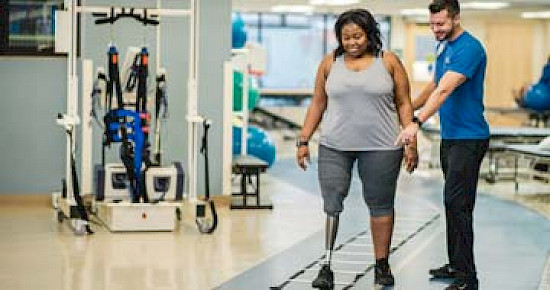
Rehabilitation for Amputees
There are many different types of amputations which in turn means there are different types of rehabilitation. Here we will look at different types depending on your goals and physical ability. Other factors that contribute to rehabilitation are; overall health, weight, age and physical ability before the amputation. The goal of rehabilitation...
read more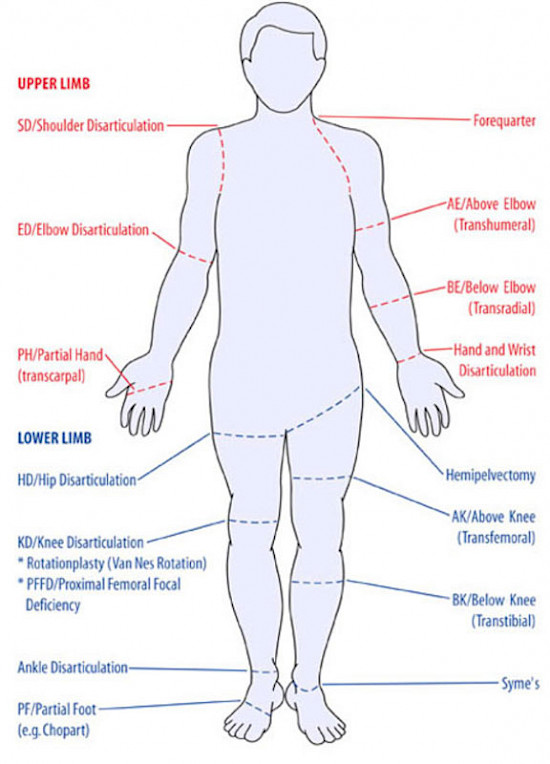
Breaking Down Amputations
As you may know there is a long list of possible amputations someone could have. Here we are going to briefly look at the 15 listed in the chart below. Upper Body Shoulder Disarticulation (SD) – The most common reason for this specific amputation is a tumor or a tragic accident where the arm is severed and cannot be saved. As you can se...
read moreWarm Weather Considerations for Amputees
As the weather warms up many people are ready to get active. The nice weather can be inspiring and motivating to get outside and enjoy a variety of summer activities. As an amputee there may be a unique set of challenges and questions when enjoying the summer months. Wearing gel/silicone liners and ply socks, along with warmer weather can be a...
read moreWhere to Find Inspiration as an Amputee
Whether you are a new amputee or have been one for years it is always great to see other people out there living their life as an amputee or helping people live their life as an amputee. With so much information on the internet today, we thought we would gather up a few resources for you and your family to take a look at. Kristie Sita Kri...
read moreProper Hand Washing Can Save Lives
According to health professionals, washing your hands is one of the top ways to protect you and your family from sickness and spreading illness. Frequent and correct hand washing is simple if you take your time and know the steps to ensure your hands are clean and free of germs. Below you can review best practices to efficiently wash your hand...
read moreCovid-19 Update
To our WinPO clients, family, and friends, WinPO will remain open with limited services and access starting March 23, 2020 until further notice, due to the COVID-19 Pandemic. The Public Health authority is advising everyone practice social distancing and reduce non-essential services by allied health organizations, WinPO is doing its part...
read moreRe: COVID-19
We at WinPO are keeping up to date with the best available information from Health Canada, The Center for Disease Control (CDC), and the World Health Organization (WHO). We can assure everyone that none of our staff have travelled out of Canada within the last month and we are following the recommended procedures and guidelines for maintaining a ...
read moreWhat Can Cause the Loss of a Limb?
In Canada, there are approximately 200,000 amputees. The three most common causes of limb loss are from disease, accident and congenital limb difference. Statistically, the most frequent limb loss is the loss of a portion of the foot and leg, either transtibial (below the knee) or transfemoral (above the knee). Below we will delve into these thre...
read moreLiving a Healthy Lifestyle with Limb Loss
Typically, right after the loss of your limb, your journey to rehabilitation starts. Limb loss causes many changes in your life, both negative and positive. It is essential to use the positive and correct the negative the best you can. With so many changes it is vital to surround yourself with a team of professionals you are comfortable with and wi...
read moreTravelling with an Amputation
With the cold weather settling in a lot of people are planning a winter getaway. Whether it be to visit family or get a break from the cold weather on a beach it takes planning. When you are an amputee it may take a little extra planning, but we are here to help you arrange a holiday that is as stress-free as possible. As you are planning your...
read more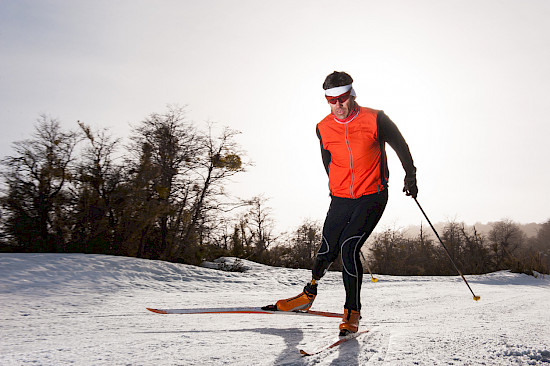
Winter With An Amputation
Winter is a season that is going to come, it is unavoidable and it can be tricky to navigate through the cold and snowy months. It is important to stay safe and think ahead as the snow settles in. If you are an amputee, especially a lower limb amputee, there are some dangers you will have to watch out for. Falling or tripping is always a hazar...
read more
Parenting a Child with Limb Loss - A New Journey for You and Your Child
Becoming the parent of a child amputee can feel overwhelming, especially at the beginning. Whether your child was born with a congenital limb deficiency or experienced an acquired amputation, it’s natural to feel uncertain and afraid. But you are not alone. In Winnipeg and across Manitoba, many families have faced this journey—and with the righ...
read more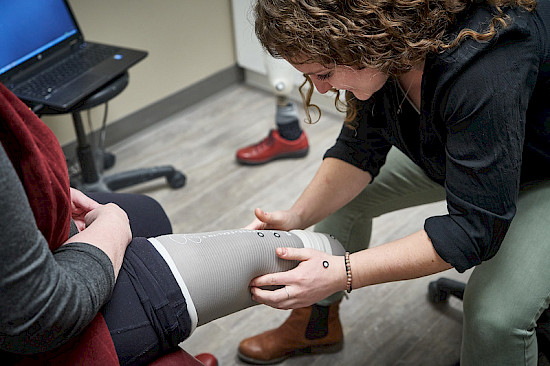
Phantom Limb Pain – You are not alone
Phantom limb pain, after an amputation, is a common side effect. If you experience this, you are not alone. Approximately 70% of amputees encounter phantom limb pain in the first six months of their amputation, although it can begin at anytime. It is most commonly found with arm and leg amputations but can appear with any amputation Phantom li...
read moreA Team to Help You on Your Journey
There can be several different reasons for an amputation to happen to an individual. They vary from an accident and emergency surgery to a planned surgery because of poor blood circulation, diabetes or cancer. You might be left with several questions when you get the news that you have had to have an emergency amputation or that you need to pr...
read more
